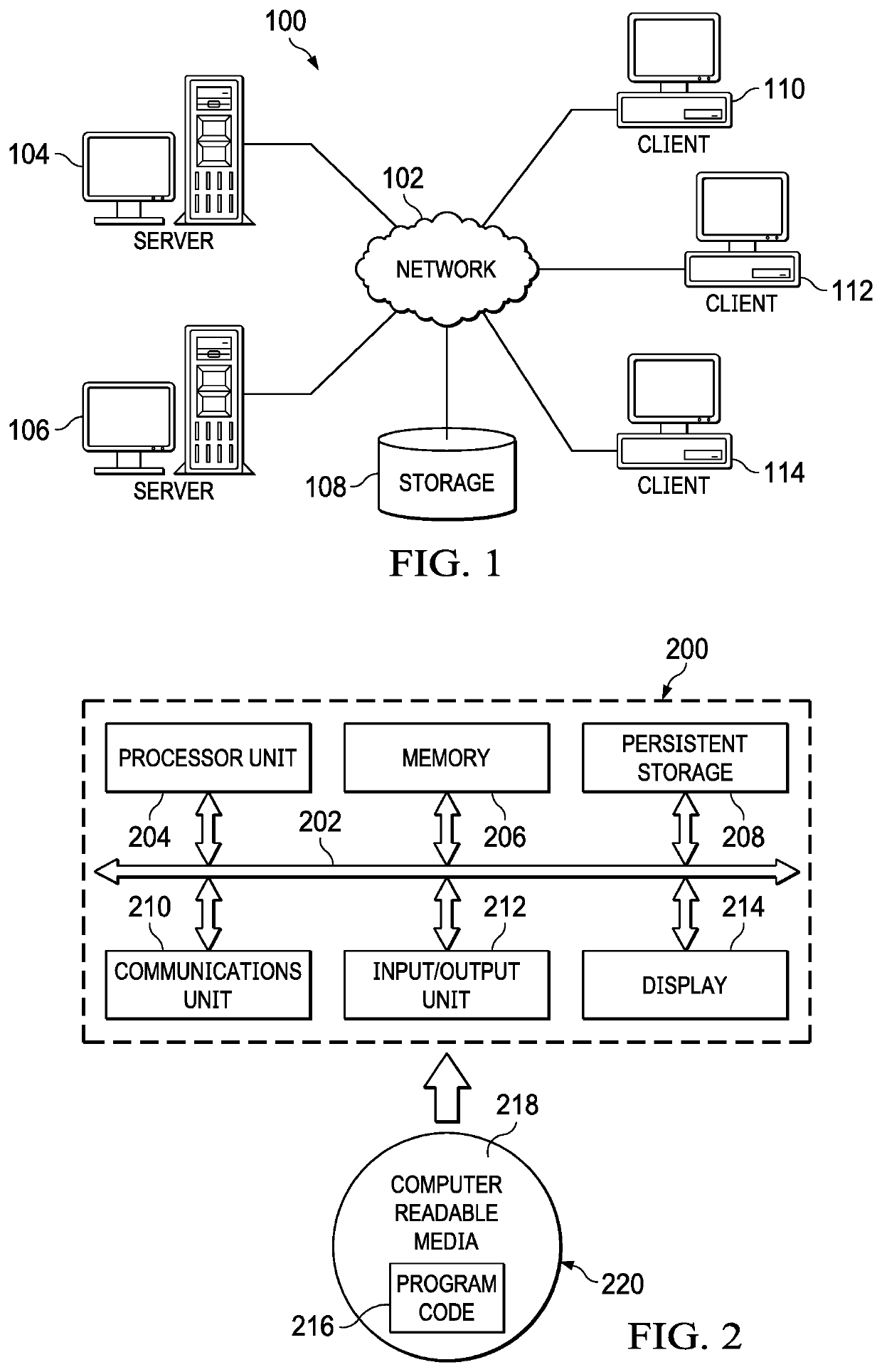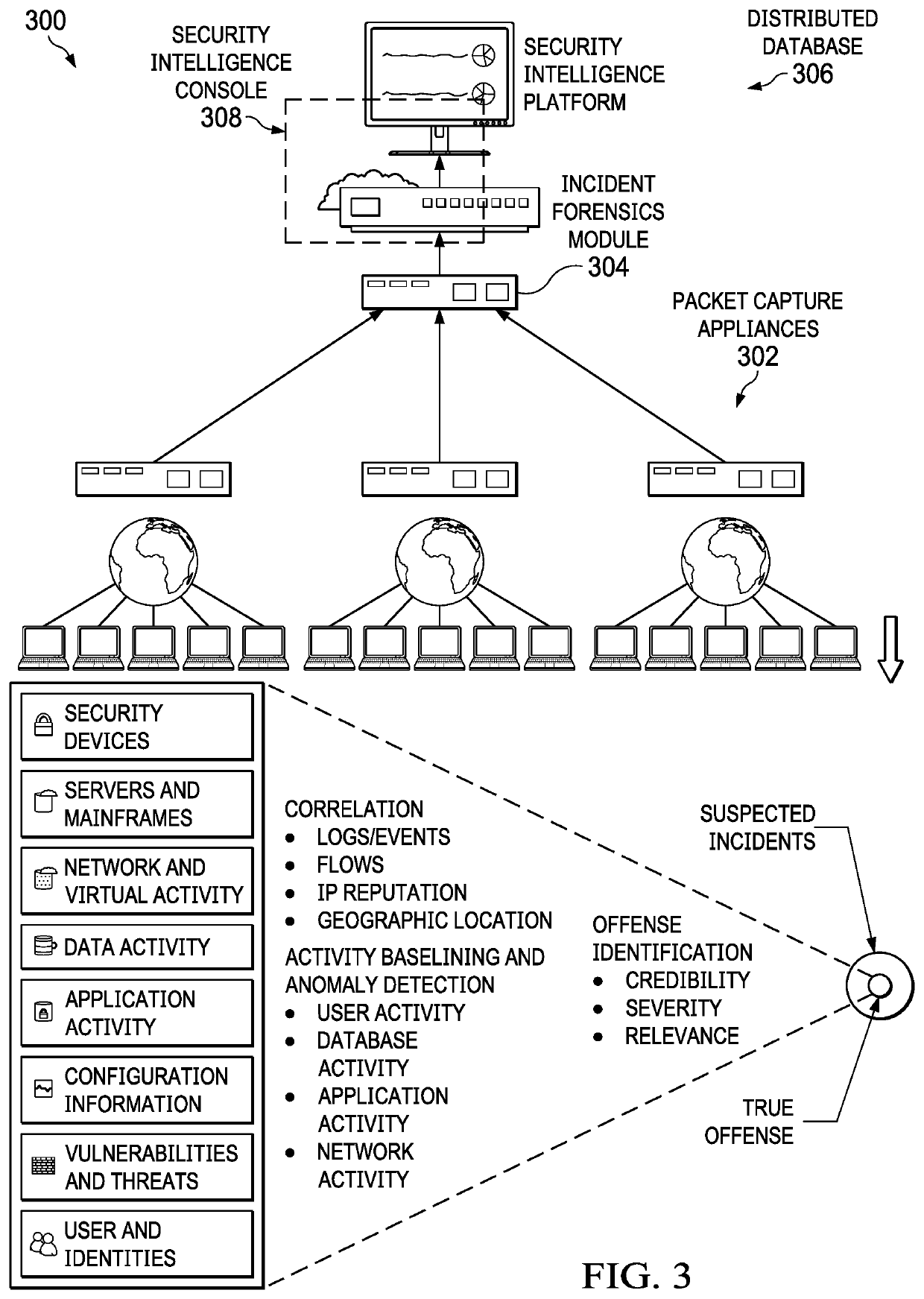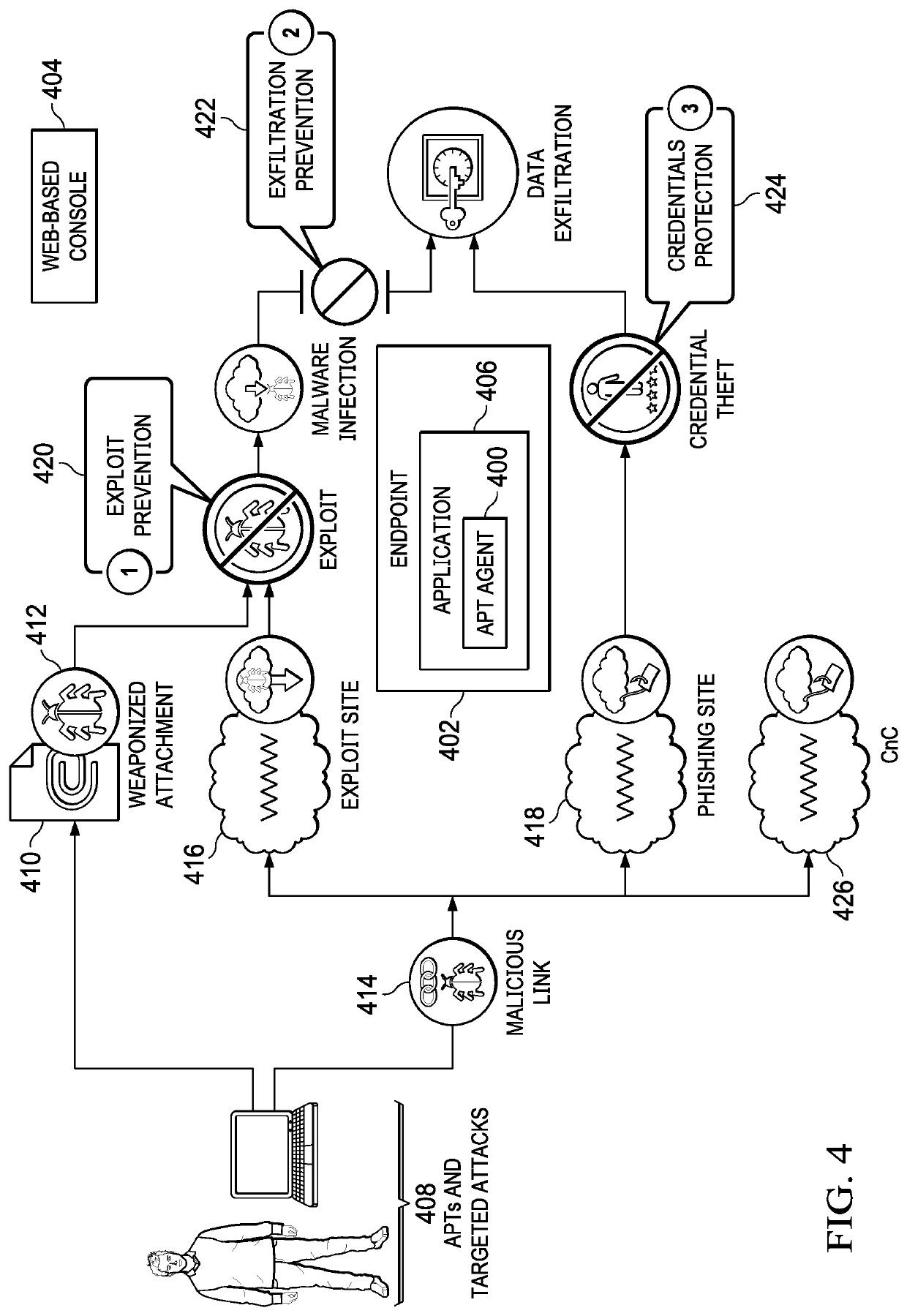Characterizing user behavior in a computer system by automated learning of intention embedded in a system-generated event graph
a computer system and event graph technology, applied in the field of computer network and system security, can solve the problems of not addressing indirect inter-process activities, unable to detect new or rapidly updated attacks in a timely manner, and transforming threat discovery into graph computation problems, so as to achieve the priority and security impact of triggering incidents, the effect of detecting the precise and scalable detection of potential malicious behaviors
- Summary
- Abstract
- Description
- Claims
- Application Information
AI Technical Summary
Benefits of technology
Problems solved by technology
Method used
Image
Examples
Embodiment Construction
[0023]As will be described below, the techniques herein utilize machine learning to derive semantic models of system events for use to provide behavior-based malware detection. Typically, machine learning algorithms and associated mechanisms execute as software, e.g., one or more computer programs, executing in one or more computing machines. As background, the following describes representative computing machines and systems that may be utilized for executing the learning process and using the derived system event model. Several execution environments (FIGS. 3-5) are also described.
[0024]With reference now to the drawings and in particular with reference to FIGS. 1-2, exemplary diagrams of data processing environments are provided in which illustrative embodiments of the disclosure may be implemented. It should be appreciated that FIGS. 1-2 are only exemplary and are not intended to assert or imply any limitation with regard to the environments in which aspects or embodiments of th...
PUM
 Login to View More
Login to View More Abstract
Description
Claims
Application Information
 Login to View More
Login to View More - R&D
- Intellectual Property
- Life Sciences
- Materials
- Tech Scout
- Unparalleled Data Quality
- Higher Quality Content
- 60% Fewer Hallucinations
Browse by: Latest US Patents, China's latest patents, Technical Efficacy Thesaurus, Application Domain, Technology Topic, Popular Technical Reports.
© 2025 PatSnap. All rights reserved.Legal|Privacy policy|Modern Slavery Act Transparency Statement|Sitemap|About US| Contact US: help@patsnap.com



